SIEM Solutions Gartner, Security Information and Event Management (SIEM) is a critical tool for organizations seeking to enhance their cybersecurity posture. SIEM solutions collect, analyze, and correlate security data from various sources, providing a comprehensive view of an organization’s security landscape. By leveraging SIEM, organizations can detect and respond to threats in real time, improve incident response capabilities, and ensure compliance with industry regulations.
Gartner is a renowned research and advisory firm that provides valuable insights and recommendations to organizations across various industries. SIEM Solutions Gartner research is highly regarded for its objectivity and depth. Using Gartner’s recommendations, organizations can make informed decisions about selecting the best SIEM solution for their needs.
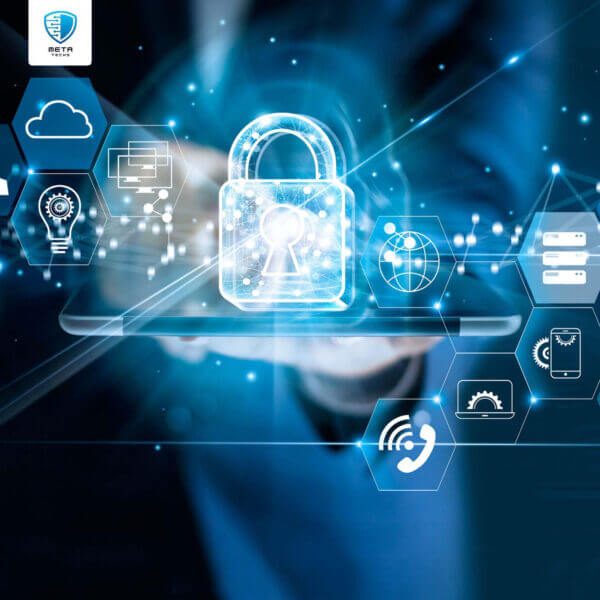
The benefits of using recommendations for SIEM Solutions Gartner include:
- Objectivity: Gartner’s research is based on rigorous analysis and evaluation, providing an unbiased assessment of SIEM vendors.
- Expertise: Gartner’s analysts have deep expertise in cybersecurity and can offer valuable insights into the latest trends and technologies.
- Credibility: Gartner’s recommendations are widely recognized and respected by industry experts.
- Informed Decision-Making: By leveraging Gartner’s research, organizations can make more informed decisions about their SIEM investments.
By understanding the importance of SIEM and the value of Gartner’s recommendations, organizations can take a proactive approach to protecting their sensitive data and mitigating cybersecurity risks.
Gartner’s Magic Quadrant for SIEM Solutions Gartner: A Comprehensive Overview
Gartner’s Magic Quadrant for SIEM is a widely recognized research report that provides an objective assessment of the leading vendors in the Security Information and Event Management (SIEM) market. The Magic Quadrant is designed to help organizations evaluate SIEM vendors based on their ability to execute their vision and completeness of vision.
Criteria Used by Gartner to Evaluate SIEM Vendors
Gartner evaluates SIEM vendors based on a variety of criteria, including:
- Market understanding: The vendor’s understanding of the SIEM market and customer needs.
- Customer experience: The vendor’s track record of customer satisfaction and support.
- Product capabilities: The features and functionality of the vendor’s SIEM solution.
- Market presence: The vendor’s market share and geographic reach.
- Overall vision: The vendor’s long-term vision for SIEM and its ability to innovate.
Leading SIEM Vendors and Their Strengths and Weaknesses
Gartner’s Magic Quadrant typically identifies a group of leading SIEM vendors based on their performance in the market. While the specific rankings and assessments may vary over time, some of the common strengths and weaknesses of leading SIEM vendors include:
- Strengths:
- Comprehensive feature set: Leading SIEM vendors often offer a wide range of features and capabilities, including event correlation, anomaly detection, and threat intelligence integration.
- Strong customer base: Established vendors typically have a large customer base and a proven track record of success.
- Continuous innovation: Leading vendors are constantly investing in research and development to improve their SIEM solutions.
- Weaknesses:
- Complexity: Some SIEM solutions can be complex to implement and manage, requiring specialized expertise.
- Cost: SIEM solutions can be expensive, especially for larger organizations.
- Vendor lock-in: Organizations may become dependent on a specific SIEM vendor, limiting their flexibility and options.
By analyzing Gartner’s Magic Quadrant and considering the strengths and weaknesses of different SIEM vendors, organizations can make informed decisions about selecting the best solution for their needs.
Key Features and Capabilities of SIEM Solutions Gartner
There are some key features that are essential for effectively detecting, responding to, and preventing security threats.
1- Event Collection and Normalization:
- Data Ingestion: A robust SIEM solution should be able to collect and process security events from a wide range of sources, including network devices, servers, applications, and cloud platforms.
- Data Normalization: The ability to standardize and normalize data from different sources is critical for effective analysis and correlation.
2- Correlation and Analysis:
- Event Correlation: SIEM solutions should be able to correlate security events to identify patterns and anomalies that may indicate a security threat.
- Behavior Analysis: Advanced SIEM solutions can use machine learning and artificial intelligence to analyze user and system behavior and detect deviations from normal patterns.
- Anomaly Detection: SIEM solutions should be able to identify unusual activities that may be indicative of a compromise.
3- Threat Intelligence Integration:
- External Threat Feeds: A robust SIEM solution should be able to integrate with external threat intelligence feeds to stay informed about the latest threats and vulnerabilities.
- Contextual Analysis: SIEM solutions should be able to correlate security events with threat intelligence data to gain a deeper understanding of the threat landscape.
4- Incident Response Automation:
- Playbook Automation: SIEM solutions should be able to automate incident response workflows, streamlining the process of containing and mitigating threats.
- Integration with Security Tools: SIEM solutions should integrate seamlessly with other security tools, such as firewalls, intrusion detection systems (IDS), and endpoint protection solutions.
5- Reporting and Analytics:
- Customizable Dashboards: SIEM solutions should provide customizable dashboards to visualize security data and identify trends.
- Advanced Analytics: Leading SIEM solutions offer advanced analytics capabilities, such as machine learning and artificial intelligence, to detect and respond to threats more effectively.
- Compliance Reporting: SIEM solutions can help organizations demonstrate compliance with industry regulations and standards.
By selecting a SIEM Solutions Gartner with these key features and capabilities, organizations can enhance their cybersecurity posture and improve their ability to detect, respond to, and prevent security threats.
FAQs About SIEM Solutions Gartners
1- What is the difference between SIEM and SOC?
While SIEM (Security Information and Event Management) and SOC (Security Operations Center) are often used interchangeably, they have distinct roles. SIEM is a technology platform that collects, analyzes, and correlates security data from various sources. It provides the tools and capabilities needed for effective security monitoring and threat detection. On the other hand, a SOC is a team of security professionals responsible for monitoring, analyzing, and responding to security incidents. A SOC typically leverages SIEM tools as part of its operations.
2- How long does it take to implement a SIEM solution?
The time required to implement an SIEM Solutions Gartner can vary depending on factors such as the organization’s size, complexity, and existing security infrastructure. However, a typical SIEM implementation project can take anywhere from several weeks to several months.
3- What are the costs associated with SIEM?
The cost of an SIEM solution can vary depending on factors such as the size of the organization, the features and capabilities required, and the level of support needed. In addition to the initial purchase cost, organizations should also consider ongoing maintenance, licensing fees, and the cost of staffing a SOC team.
4- How can SIEM help with compliance?
SIEM can help organizations demonstrate compliance with various industry regulations and standards, such as:
- General Data Protection Regulation (GDPR): SIEM can help organizations identify and respond to data breaches, which is a key requirement under GDPR.
- Payment Card Industry Data Security Standard (PCI DSS): SIEM can help organizations monitor network activity for signs of unauthorized access and data breaches, which are essential for PCI DSS compliance.
- Health Insurance Portability and Accountability Act (HIPAA): SIEM can help healthcare organizations identify and respond to breaches of protected health information (PHI).
- ISO 27001: SIEM can help organizations implement and maintain an information security management system (ISMS) that meets the requirements of ISO 27001.
By leveraging SIEM, organizations can demonstrate their commitment to data protection and compliance with industry regulations.
Partnering with Meta Techs can provide organizations with the expertise and support needed to successfully implement an SIEM solution. Our team of experienced cybersecurity professionals can help you:
- Identify the right SIEM solution: We will work with you to assess your organization’s specific needs and recommend the most suitable SIEM solution based on Gartner’s recommendations.
- Implement the SIEM solution: Our experts can assist with the implementation process, ensuring that the solution is configured and integrated effectively.
- Provide ongoing support and maintenance: We offer comprehensive support and maintenance services to ensure that your SIEM solution is always up-to-date and operating at peak performance.
By leveraging the power of Gartner’s recommendations and partnering with Meta Techs, organizations can gain the confidence that they have selected the best SIEM solution for their cybersecurity needs and are taking proactive steps to protect their sensitive data.
Contact us today to learn more about how Meta Techs can help you enhance your cybersecurity posture with a robust SIEM solution.
Related posts:
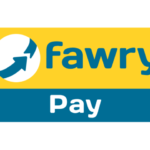 Fawry comments on cyber attacks and data leaking
Fawry comments on cyber attacks and data leaking
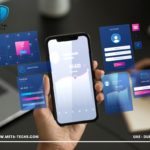 Effective Policy for data retention policy best practices
Effective Policy for data retention policy best practices
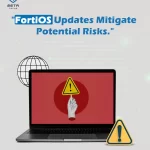 the Latest fortinet vulnerability 2024
the Latest fortinet vulnerability 2024
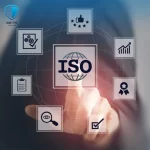 What Is ISO 27001?, Core Principles, Benefits, and Requirements
What Is ISO 27001?, Core Principles, Benefits, and Requirements
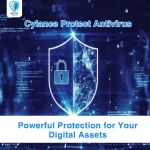 Cylance Protect Antivirus for Your Digital Assets
Cylance Protect Antivirus for Your Digital Assets

![Rapid7 Vulnerability Management]](https://meta-techs.net/wp-content/uploads/2025/03/What-is-Rapid7-Vulnerability-Management-1.webp)